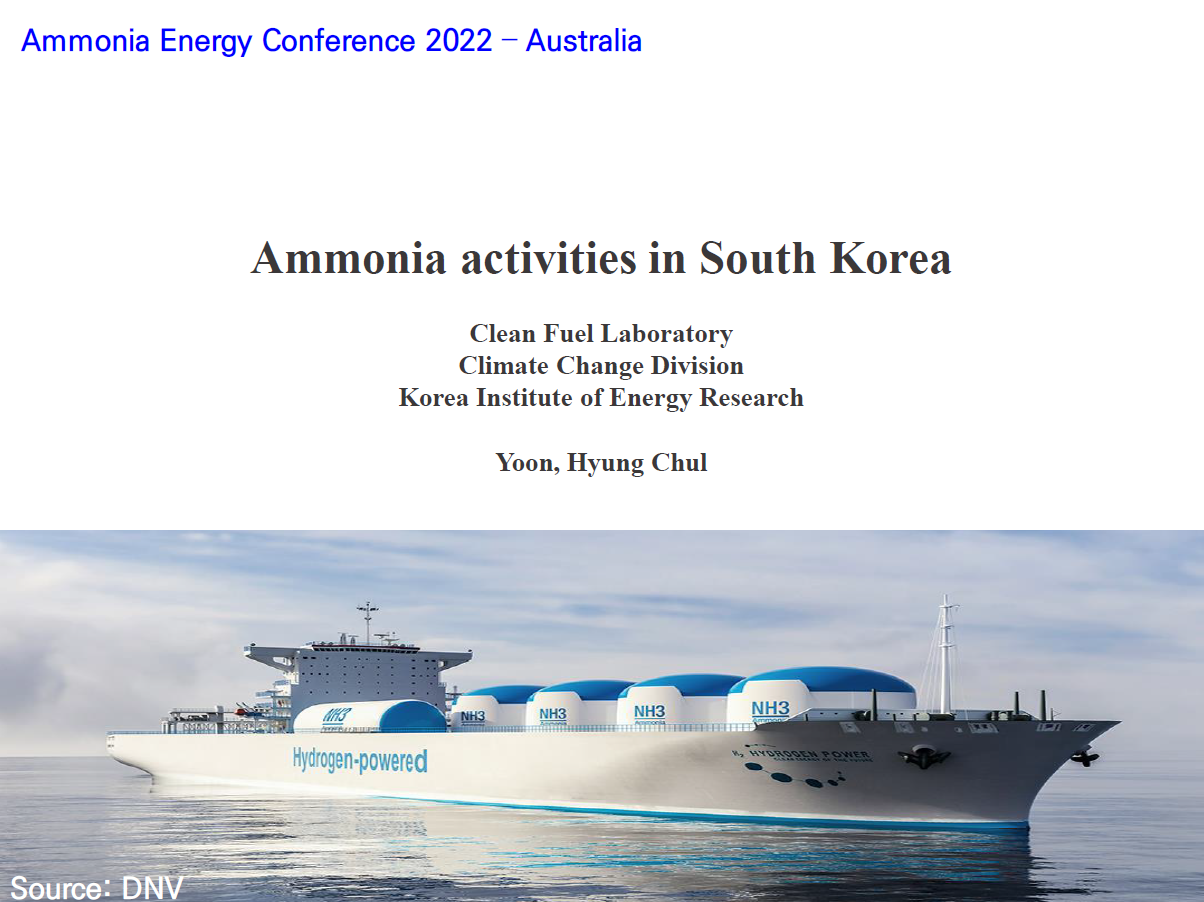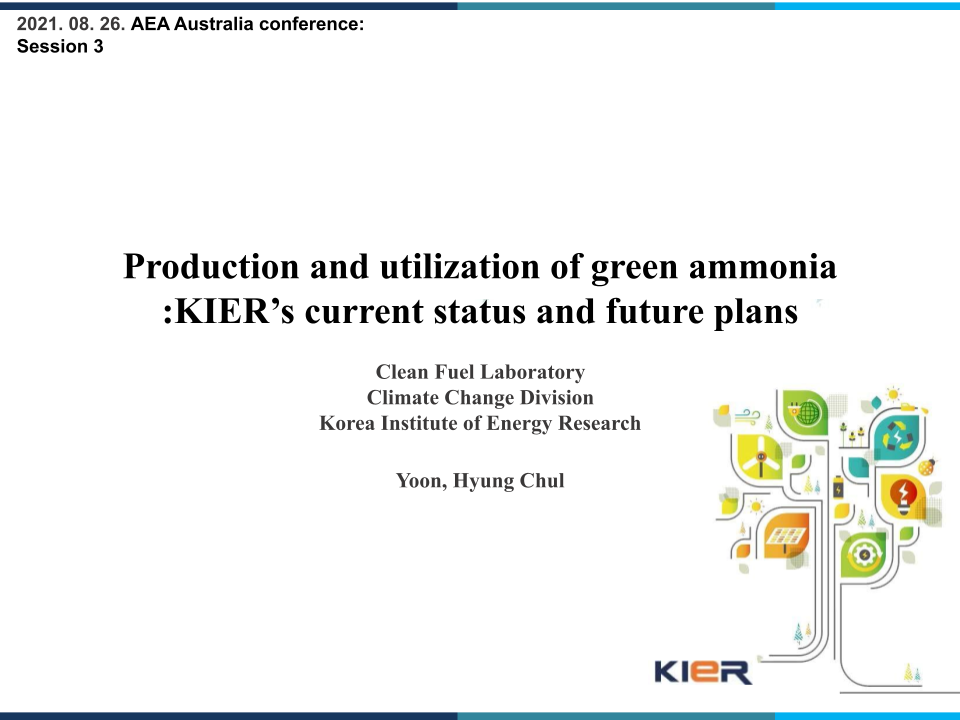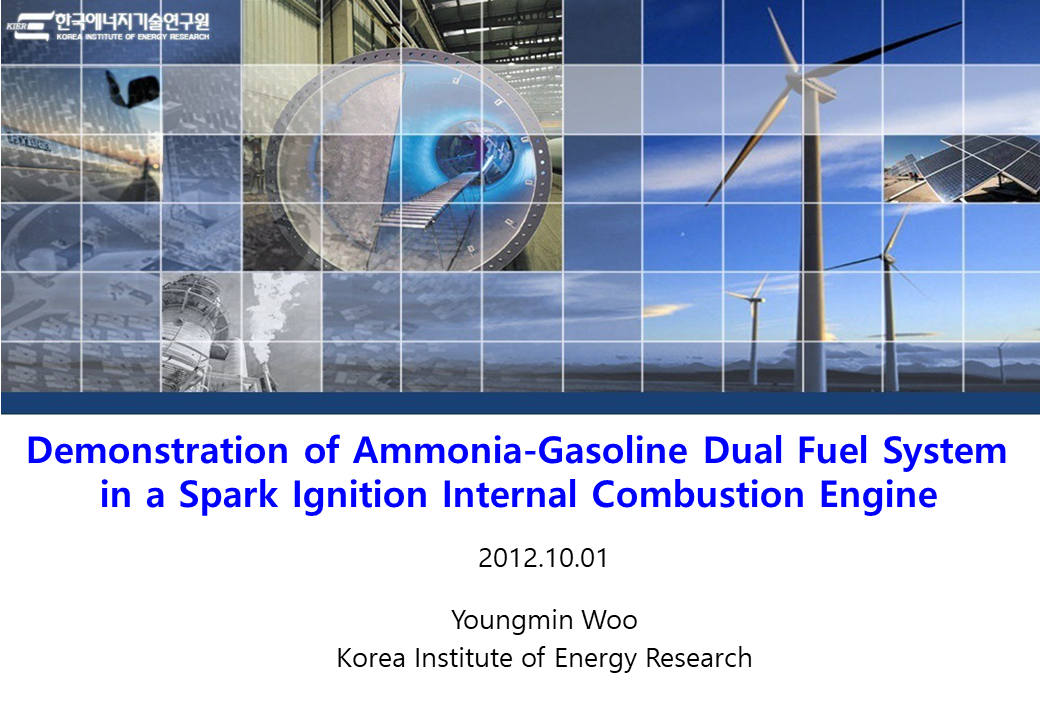Green ammonia, a carbon-free chemical, has been drawing much attention as a hydrogen carrier and carbon-neutral fuel for trading green hydrogen and building a carbon-neutral society, respectively, because it has higher volumetric hydrogen content and energy density than liquid hydrogen. And the infrastructure for storing and transporting ammonia is already in place. To implement green ammonia into the current energy systems, technologies on low-cost green ammonia production, decomposition, and utilization are essential. This presentation will show the KIER’s current status and perspective on the development of low-cost green ammonia production and utilization.
Content by Author
Presentation
Overview of the KIER’s Electrochemical Ammonia Synthesis – Present State and Perspective
Ammonia has a potential as a carbon-free energy carrier since it contains 17.6wt% of hydrogen and can be easily stored and transported safely and efficiently. The state-of-the-art industrial process for ammonia production is the Haber-Bosch process. Although high temperature (450–500 °C) and pressure (150–300 bar) are used to dissociate triple-bonded nitrogen and to maximize the ammonia formation, the efficiency of the Haber–Bosch process is limited to 10–15%. Moreover, the process accompanies high greenhouse gases emission since hydrogen is produced from natural gas. In order to overcome the drawbacks of the Haber-Bosch process, the electrochemical ammonia synthesis has been developed as…
Presentation
Effects of cathodic materials on the electrochemical ammonia synthesis from water and nitrogen in molten salts at atmospheric pressure
Electrochemical synthesis of ammonia from water and nitrogen at atmospheric pressure could be an alternative to the current ammonia synthesis process (i.e. Harbor-Bosch) and solve the inherent problems of the process including its high energy consumption and greenhouse gas emission. This study reports electrochemical ammonia synthesis from water and nitrogen in molten salts at atmospheric pressure and temperatures exceeding 623K. Modifications on surface materials of the nitrogen activation electrode were made, tested, and their ammonia synthesis rates were compared.
Presentation
Electrochemical Ammonia Synthesis from Water and Nitrogen using Solid State Ion Conductors
Besides its current applications, ammonia (i.e. carbon-free fuel) could play important roles in preparing for oil depletion and coping with climate change since it releases only nitrogen and water when burned. Ammonia contains 17.6wt% of hydrogen and has significant advantages over hydrogen in storing and transporting energy. The current industrial ammonia production is based on the Haber-Bosch process, which has the drawbacks of high greenhouse gas emission, reaching up to 2.16 kg CO2/kg NH3 and large energy consumption over 30 GJ/ton NH3 resulting from the production of the reactants and the high pressure-high temperature synthesis of ammonia. In order to…
Presentation
Electrochemical Synthesis of Ammonia from Steam and Nitrogen Using an Oxygen-ion Conducting Electrolyte
Electrochemical Synthesis of Ammonia from Steam and Nitrogen Using an Oxygen-ion Conducting Electrolyte Jong Hoon Joo, Hyung Chul Yoon, Hana Jeoung, Ji Haeng Yu, Jong-Nam Kim, Youngmin Woo, Jin Young Jang, Korean Institute of Energy Research
Presentation
Demonstration of an Ammonia-Gasoline Dual Fuel System in a Spark Ignition Internal Combustion Engine
Demonstration of an Ammonia-Gasoline Dual Fuel System in a Spark Ignition Internal Combustion Engine Youngmin Woo, Jin Young Jang, Youngiae Lee, Jong Hoon Joo, Ji Haeng Yu, Hyung Chul Yoon, and Jong-Nam Kim, Korean Institute of Energy Research


